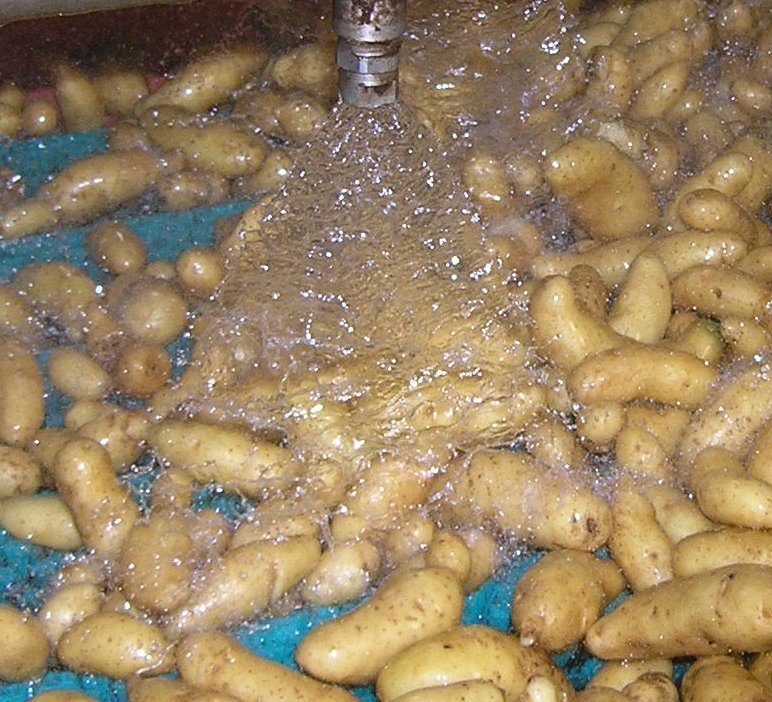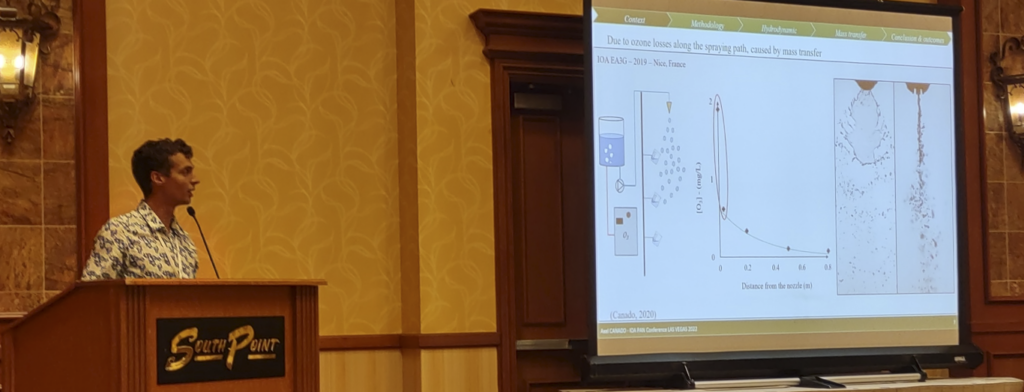Treating water borne pathogens with ozone has a solid and predictable record of effectiveness. Ozone readily dissolves in water and quickly inactivates any bacteria and viruses found in the water. Levels of dissolved ozone can be accurately measured, and these measurements can be used to effectively reach targets for pathogen inactivation.

Applying ozonated water to surfaces in an effort to inactivate fungus, bacteria and viruses found on the surfaces has proven to be more challenging because the ozone has a tendency to come out of the water as it is being applied. The research indicates that dissolved ozone levels drop from 2ppm to 0.1 ppm within one meter of the spray nozzle. With a depletion of the dissolved ozone levels in the water, the power of disinfection is reduced. Starting with higher levels of dissolved ozone and ensuring longer contact time have proven effective at overcoming these challenges, but the larger and more costly equipment needed to reach these levels is prohibitive.
A better understanding of how and why ozone comes out of the water is another tool we can use to help overcome the challenges of applying ozonated water to surfaces. Until now, the predominant explanation for this reduction in ozone has been the breakdown of ozone back to oxygen due to agitation, or the diffusion of ozone from the droplets into the air. A recent study by graduate students at Purpan https://www.oxidationtech.com/Downloads/ozone-water/Dissolved-ozone-spray-research.pdf has demonstrated that most of the ozone leaves the water before it becomes droplets due to mass transfer of the ozone from the water stream to the surrounding air.

Research presentation by Axel Canado (Purpan Engineering School) at the International Ozone Association 2022 in Las Vegas.
It is well known in the ozone industry that agitation and a sudden decrease in water pressure results in ozone off-gasing from the water. This phenomena is commonly observed by us all when a carbonated beverage is agitated and then opened the carbon dioxide dissolved in the beverage comes out of solution, forms bubbles, and dissipates into the air. When handling ozonated water, care must be taken to prevent as much as possible the mass transfer of ozone from the water back into the air.
The function of an ozone water system is to support the mass transfer of ozone into water. Under the right conditions of pressure, ozone concentration, and temperature, a well designed ozone system will maximize the values of Henry’s Gas Law and effectively dissolve more than 90% of the ozone injected into the water. https://www.oxidationtech.com/ozone/solubility/fundementals-of-ozone-solubility.html. An effective ozone system will also prevent mass transfer of ozone back out of the solution.
Just as the mass transfer of ozone into water happens nearly instantaneously under the right conditions with a Mazzei venturi injector, so the mass transfer of ozone out of water can happen very quickly when ozonated water is sprayed from a nozzle. The measurements taken by the Purpan research group demonstrate that ¾ of the ozone had transferred from the water within the first few centimeters from the end of the spray nozzle. By the time the stream of water breaks into droplets, the majority of the ozone has already transferred out of the water to a gas phase.
I am not aware of a nozzle for spraying ozonated water that prevents mass transfer of ozone out of the water. There are methods for applying ozonated water that minimize this mass transfer loss. Winemakers are able to disinfect the inside of fermentation vessels using 4 ppm ozonated water with a barrel rinsing wand. A low pressure wand will minimize off-gas and with a 75% loss, the surface water still has enough dissolved ozone to be effective after 15 minutes of contact time. A gentle shower instead of a misting nozzle is much more effective for rinsing produce or meat. Produce washing is most effective if the produce can be bathed in ozonated water.
Using the venturi principle with moving air is an alternative to using a spray nozzle and may be a way to minimize the pressure drop that occurs with a spray nozzle. The ozonated water is pulled into the moving air stream and atomized. This principle is used with backpack mist blowers used for pesticide application. I am not aware of any testing of mist blowers to determine the effectiveness of preventing ozone offgas, but this data would be valuable. The size and cost of ozone equipment needed to reach a target ozone level can be greatly reduced if the 90% loss of ozone can be recovered.

Read this full research here
https://www.oxidationtech.com/Downloads/ozone-water/Dissolved-ozone-spray-research.pdf
If your application requires using ozone water to be sprayed keep these factors in mind:
- Limit the pressure water is sprayed at, higher pressures flash off more ozone from water
- Limit the distance from the spray nozzle to the point of application or surface
- If necessary increase the starting dissolved ozone level to higher levels
- Keep water temperatures low

Pingback: Sudden Decrease of the Dissolved Ozone Concentrationin Sprays: A Mass Transfer Phenomenon? – Oxidation Technologies News